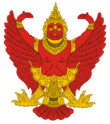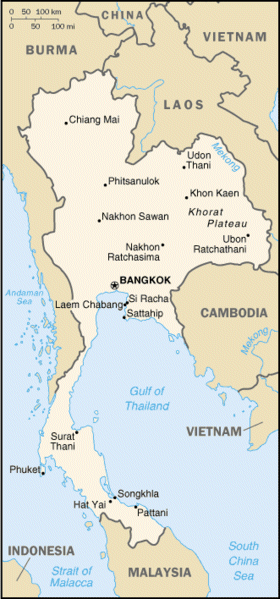
 |
 |
 |
 |
 |
 |
THAILAND



HISTORY
Thailand's origin is traditionally tied to the short-lived kingdom of Sukhothai founded in 1238, after which the larger kingdom of Ayutthaya was established in the mid-14th century. Thai culture was greatly influenced by both China and India. Contact with various European powers began in the 16th century but, despite continued pressure, Thailand is the only Southeast Asian country never to have been taken over by a European power. Western influence, however, including the threat of force, led to many reforms in the 19th century and major concessions to British mercantile interests. This included the loss of the 3 southern provinces, which later became Malaysia's 3 northern states.
Thailand was never colonised by a European power. There are two main reasons for this. First, it was left as a buffer state between parts of Asia that were colonised by the French and the British. Second, Thailand had a series of very able rulers in the 1800s.
A mostly bloodless revolution in 1932 led to a constitutional monarchy. Known previously as Siam, the country first changed its name to Thailand in 1939, and definitively in 1949 after reverting to the old name post-World War II. During that conflict Thailand was in a loose alliance with Japan; following its conclusion Thailand became an ally of the United States. Thailand then saw a series of military coups d'état, but progressed towards democracy from the 1980s onward.
The official calendar in Thailand is based on the Buddhist Era, which is 543 years ahead of the western calendar. For example, the year AD 2006 is equal to the year 2549 BE.
On 26 December 2004 the southwest coast of Thailand was devastated by a tsunami following the 2004 Indian Ocean earthquake. In places it was as high as 10 meters (30 ft). It killed more than 5,000 people in Thailand, half of them tourists.
for more information click here